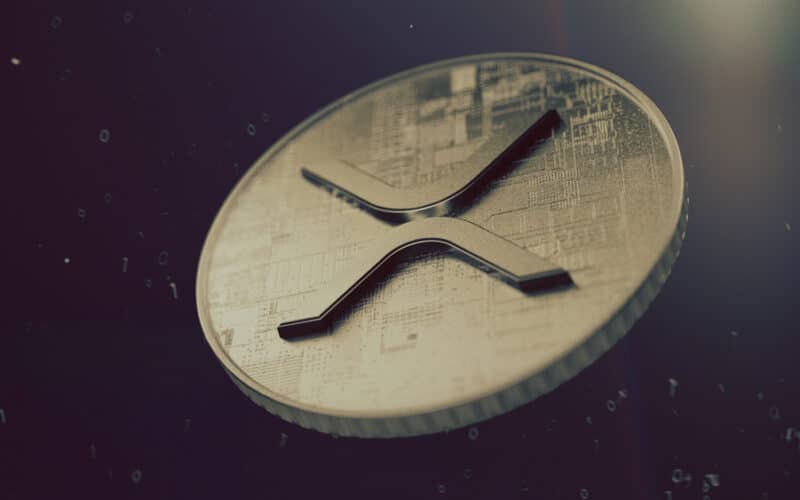XRP has consistently been one of the most popular cryptocurrencies, often featuring in the top 7 and at times in the top 3 for the most traded. This achievement gives XRP tremendous credibility many other coins have yet to attain, mainly because of their questionable intrinsic value.
So, if one wonders why the demand for XRP exists and what it does for the crypto industry, XRP is best summarised as the ultra-cheap and ultra-fast version of SWIFT.
SWIFT (Society for Worldwide Interbank Financial Telecommunication) has been the go-to network for financial institutions to facilitate international money transfers between their clients for decades.
While this system is largely efficient, it has been plagued by high fees, long processing times, and a lack of transparency. Ripple’s XRP cryptocurrency is one of the formidable solutions to this problem.
Their clientele includes large financial corporations like Bank of America, Santander, Standard Chartered, and hundreds of others in over 55 countries. XRP had its best-performing year during the 2017 crypto bull bun, trading as high as $3.40 by the start of 2018.
At the time of writing, 1 XRP is worth $1, and many analysts and investors globally see this as the opportune price to potentially invest in the coin.
History of XRP
Many traders often erroneously refer to Ripple as the actual cryptocurrency. Instead, RippleNet is the network facilitating transactions developed by Ripple, while XRP is the cryptocurrency used. Ripple was created by RippleLabs Inc., an American fintech corporation founded by two well-known American business executives, Chris Larsen and Jed McCaleb.
Well before cryptocurrencies burst onto the scene, the idea for Ripple already existed since 2004. An American software developer named Ryan Fugger invented RipplePay, a payment network that had similar goals for what we now know as Ripple; a faster, cheaper, and secure version of a remittance system like SWIFT.
RipplePay existed for some time, fulfilling these purposes and also enabled clients to extend credit lines. In May 2011, McCaleb, who would later form Ripple Labs Inc., was developing a digital currency and looked to integrate RipplePay.
After approaching future co-founder Chris Larsen for further direction, Fugger ultimately left the project. Both Larsen and McCaleb formed Ripple Labs Inc. in September 2012, although it was previously known as OpenCoin until roughly a year later.
Coupled with successful rounds of venture capital, acquisitions, and continually advanced development to the Ripple protocol, the XRP cryptocurrency slowly grew to massive popularity.
How does XRP work?
At its core, Ripple is a real-time gross settlement payment and currency exchange network primarily used by financial companies. However, any other payment facilitator such as a cryptocurrency exchange or even individuals can take advantage of this innovation.
Ripple utilizes an open-source blockchain ledger known as the XRPL or XRP ledger, relying on a trusted group of validator nodes to secure the network and confirm transactions.
More importantly, no mining or staking is involved. So, what is a practical example of XRP in action? Firstly, the minimum transaction fee for Ripple is a super low 0.00001 XRP ($0.00001 if accounting for the current XRP/USD exchange rate.
Moreover, the approval time is 5 seconds, one of the lowest in the industry. Financial corporations like banks rely on Ripple for these benefits to serve their clients. However, Ripple is also superior in currency exchange for individuals).
Let’s imagine John desires to send €100 to their friend, James, in South Africa. Ordinarily, using a service such as PayPal or Skrill will come with a currency conversion fee, often a few percent of the total amount.
Again, like SWIFT, these facilities are slow compared to Ripple. In this scenario, John would convert their euros into XRP, going through Ripple’s network with an ultra-low transaction and conversion fee. In the end, their friend would receive their South African rands efficiently and quicker than through other providers.
XRP supply
XRP is distinct in its total supply and creation process. A total amount of 100 billion tokens were created before the launch of XRP to the public, which makes the coin deflationary. In some cases, such coins become more in-demand over time due to the limited supply.
At present, approximately 46.1% or 46.1 billion is in circulation. Ripple releases roughly 1 billion XRP monthly on a 5-year rolling plan where any unutilized portion goes back to the company.
Final word
Too much evidence on the usability of Ripple suggests it is here to stay. The project has been a dominant player in cryptocurrencies for numerous years and has proven its appeal. From an investing perspective, let’s look at a brief run-down of the pros and cons of Ripple.
Pros
- Ripple has an understandable and already-proven use case; a real-time cross-border payment network and currency exchange. As an international payment network, it is magnitudes cheaper, faster, and secure than the vast majority of others.
- The coin has firmly been in the top 8 and, at other times, in the top 3 of traded cryptocurrencies for a few years, evidence of its credibility, longevity, and popularity.
- Ripple is probably the most scalable coin, something many crypto projects are currently not. To put this into perspective, Ripple is said to handle more or less 1500 transactions every second.
On the other hand, Bitcoin processes about 5 in the same period. Furthermore, the speed for both shows XRP is worlds apart. On average, it takes about 5 seconds for a transfer to be approved, a stark contrast to Bitcoin’s 10 minutes.
- The price of 1 XRP is relatively low at the moment.
- Lastly, Ripple is eco-friendly since it doesn’t rely on power-consuming mining to operate. With the environmental concerns of many cryptocurrencies using proof-of-work, Ripple is a good alternative for the eco-conscious investor.
Cons
- Many argue Ripple is mostly not decentralized, which goes against the principles of cryptocurrencies. For instance, reports suggest Larsen owns about a third of the total XRP supply.
- Ripple still has their ongoing SEC lawsuit since December 2020 over allegations the brand sold $1.3 billion worth of XRP in an unregistered securities deal. No date has yet been confirmed over when this matter will be settled, meaning it could go on indefinitely.
Any bad news arising from this issue is likely to bring XRP’s value down for some time.








